KBB’s fast-rising NASCAR star Chase Elliott is a quick study
When push comes to shove, usually around the last eight or nine laps of a Monster Energy Cup NASCAR race, keep an eye on #24, Chase Elliott. Sponsored by Kelley Blue Book at Sonoma Raceway this weekend, Chase has it in him to push and shove with the best of them — although you might never suspect it talking to this personable, polite young man.
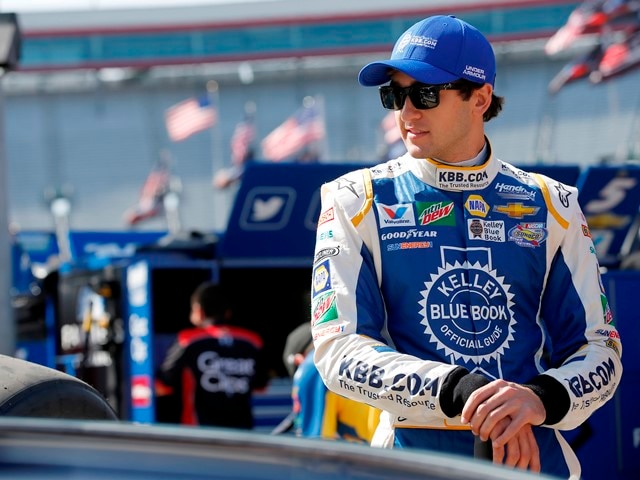
But let there be no doubt, last year Chase provided enough push-and-shove to be NASCAR’s 2016 Rookie of the Year. Of course, to people familiar with NASCAR’s breeding stables, at age 20, Chase was already a grizzled veteran. He’s been racing since Ben Hur. Now 21 (going on 40), he exhibits all the genteel penalties of a really good Southern upbringing. He’s friendly and well-mannered. He never complains that life “isn’t fair.” He doesn’t grumble about other people driving dirty to beat him. Frankly, he’s a tough interview.
Yet Chase knows perfectly well what he’s about. His dad is NASCAR living legend Bill Elliott, one of the most popular, bravest, and winningest racers the sport has seen. And “Awesome Bill from Dawsonville” (Georgia) is literally the fastest NASCAR driver of all time. His 1987 Talladega qualifying lap of 212.809 mph is the fastest stock-car lap ever recorded…big shoes for Chase to fill. Hoping for a little journalistic melodrama, however, if you ask him what it was like “growing up in the shadow of his famous father,” he just smiles. “Oh, I never felt that way about it. I always thought it was really cool to go to races together and watch him do his thing.”
Chase has all the right answers, and he certainly looks the part. Tall, slender, and good-looking, with a resonant basso that fills the tape recorder no matter how much background noise there is, he is poised, well-adjusted, effortlessly likeable. He’s featured in Kelley’s upcoming Everyday Expert Series about getting familiar with the car market. If you need a grin, check him out flipping water bottles. He’s a natural.
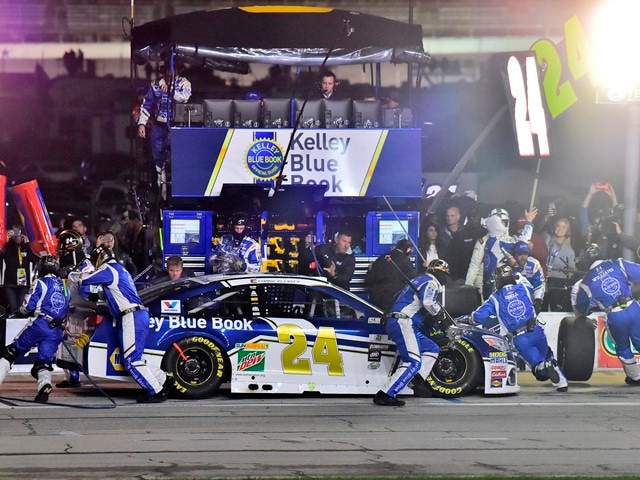
In most instances, NASCAR apprentices are allowed to make the inevitable rookie mistakes buried deep in the obscurity of mid-pack — not Chase. His rookie year, driving a premier Hendrick Motorsports Chevrolet SS, surrounded by teammates seven-time NASCAR champion Jimmy Johnson, perennial most-popular driver Dale Earnhardt Jr., and well-respected Kasey Kahne, Elliott was resolutely in the spotlight. He did his rookie learning running in the top five on national television. And given his lineage and speed, the public’s expectations could’ve been a burden. Again, not for Chase.
“Last year was my first in Cup, but I’ve been racing for years before that,” Chase said. “Just because I’m racing on this stage, a lot of things don’t change that you learned racing short-track cars. Some of those mistakes really aren’t acceptable, because I’ve been doin’ it long enough that I oughta know how by now.”
It’s a recurrent theme with Elliott. Others’ expectations don’t matter; he has his own! “I have certain things I want to see in myself…things that I want to do,” he told us. “But other than that, I don’t spend a lot of time on expectations. It’s kind of irrelevant. I know that’s not a great answer, but that’s the way I feel about it.”
Honestly, there couldn’t be a better answer. Yet surely growing up around the remarkable Bill Elliott had its influence.
“It’s not so much the things he told me,” Chase confided, “it was kind of learning by example. I look up to people who do things the right way, and I was lucky enough to have a lot of people that I thought did it the right way when I was growing up.”
Were there others besides his parents?
“There are a number of guys for me.” Chase said. “Tony Stewart was maybe the first guy I really pulled for. He was always really kind to me since I was a little kid, and I always thought that was kinda cool. I looked up to him. And there were a couple of other guys — Kasey Kahne was one. He took over the car from my dad, the #9. Now we’re teammates. Funny how that worked out.”
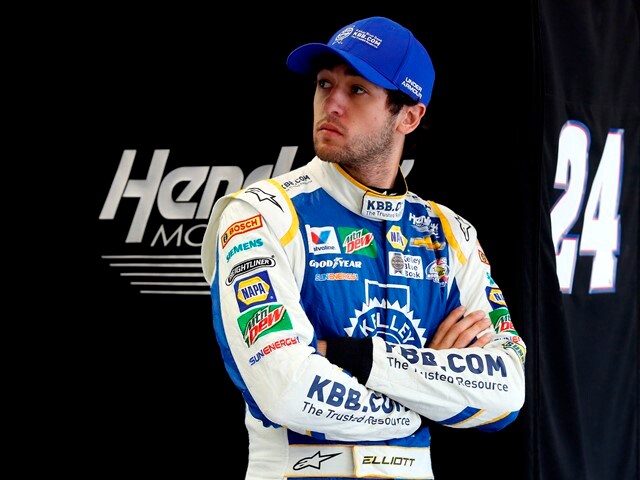
Learning Curves
Racing in NASCAR is full immersion in driving technique. No matter how much experience you have, there’s always more to learn. And the number and timing of pit stops, for instance, can fundamentally change the demands on a driver by dictating the seemingly counterintuitive racing skill of extending fuel mileage — yet still racing hard.
Chase smiled, mulling the topic.
“I’m pretty clear on how to do it, but it’s tricky — much easier said than done,” he said. “Nine times out of ten when fuel mileage is an issue, you’ll be racing guys who are on different strategies, and that puts you in a box of speed. You have to decide if you’ll push and push, so the guys behind don’t catch you — or push to try and catch a guy that’s ahead — yet all the while, you’re saving some fuel. It’s very circumstantial. It’s a matter of executing with the right mentality in the right situation.”
But isn’t that frustrating? Some Cup drivers, even the fastest and most competitive, openly confess to having no talent for fuel-mileage races. As a racer, don’t you crave driving all out?
“No,” Chase said firmly. “When you’re pushing to save fuel, typically, you’re gambling to make a really good finish possible…you want to make that happen! You’re either running really well and don’t want to lose track position, or you’re taking a gamble on trying to make up track position on the other guy. The risk/reward may not always make sense, but if it does, it’s a thing you have to prepare for. I really don’t care if I’m running as fast as possible — it all goes back to what you have to do to win. It’s a circumstance you’re faced with sometimes.”
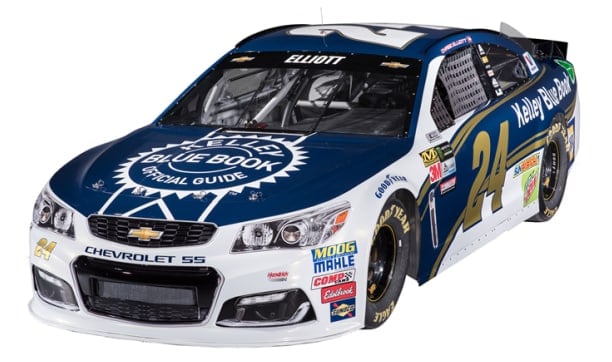
Another matter Chase Elliott faces, alas, regularly, is the extreme difficulty of winning in Cup. Gifted with enormous driving talent, blessed with a fast, reliable Hendrick Chevrolet SS, Elliott hasn’t won yet. Worse, at several races, he’s had all the ingredients to win and arguably the best car. How does a young pro digest disappointment weekend after weekend?
Chase is matter-of-fact: “The best car rarely wins these races, you see it every week. Jimmy [Johnson] won last week at Dover, but I don’t think he had the best car. He’s probably the best driver at Dover, but I can’t say he had the best car — and he’ll probably tell you the same. It just depends on the weekend and the sort of things that happen in the race.
“If you’re leading the race all day, like some of these guys do, the guys behind you at the end of the race will do the exact opposite of you in the way of pit stops and new tires in order to try and beat you — that’s just the way it is! We see so many late-race cautions, and they can change everything. The funny thing is, a lot of these are organic. Things just happen. You’ll suddenly get a caution nobody can control! I usually try to plan for that, but it hasn’t changed anything for me yet.”
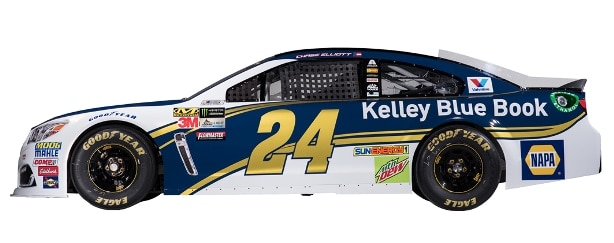
If The Shoe Fits
A Cup car is a magical mystery tour of tiny technical adjustments and fine tuning, all orchestrated to give the driver exactly the right handling characteristics for driving fastest. And commonly traveling over 200 mph, faster than it takes to lift a fully loaded Boeing 747 into the air, a Cup car’s aerodynamic balance is a crucial ingredient in delivering stable, manageable handling.
What’s interesting, though, is that drivers have different preferences in the way they tune their cars’ balance. In NASCAR, you often hear of a car being set up “tight” or “loose.” The former means simply that in a corner, the car will not turn as sharply as its front wheels are steering; it “understeers.” Contrarily, to be “loose” in a corner means that the car will rotate more than the front wheels are steering; it “oversteers.”
Relatively speaking, setting up a car a little tight is “safer,” because it is less likely to spin when it reaches the cornering limit. Yet odd as it sounds, the very fastest drivers prefer a car that is slightly loose, with a degree of oversteer. That way, the car rolls through the corner more freely, without being slowed by the friction of skidding against its front tires. This also requires, by the way, driving with wicked-quick reflexes, to keep the car from over-rotating into a spin and losing control completely.
Jimmy Johnson, Chase Elliott’s Hendrick Motorsports teammate and one of the modern NASCAR masters, prefers a “loose” car — but only slightly — because it will corner faster, with less friction. (Provided it doesn’t spin.) When we asked Chase where his preference was on the spectrum of “loose” and “tight,” his answer was moderate, noncommittal, typical Chase.
“I don’t know,” he said, “I try to stay kind of right in the middle of the road. I don’t like a real ‘tight’ feel, because that really limits your speed, but it all depends on the racetrack. And my definition of tight or loose might not be the same as another guy’s. We all have our different ways of doing it. It’s hard to describe. For me, really, a lot of it has to do with the abrasiveness of the track surface itself.”
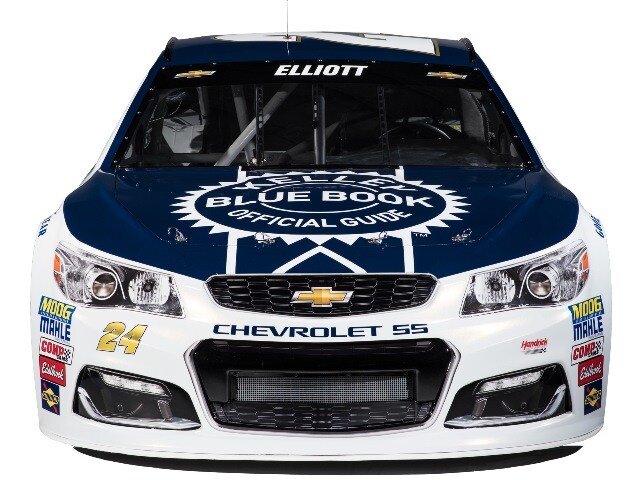
You see it, of course — Elliott’s self-contained confidence. He feels no discomfort about whether he’s got it “right” or not. He’s built upon his own experience, and after a number of years racing, he’s convinced he’s on the right track. Yet his self-confidence doesn’t err on the side of arrogance, either. He has benefited from the generous help of some deeply seasoned NASCAR pros.
“Kevin Harvick came over to me when I came into Cup,” Chase told us, “and we spent a lot of time talking. I’d say for the first half of the first season, after a day at the racetrack, I’d spend the following hour on the phone with him talking about the tracks and some of the things coming up. There were a lot of times like that. And Jimmy [Johnson] has been a big help, too, since I got up here to Hendrick.”
It doesn’t hurt to know the best people, and a more richly gifted pair of NASCAR pros than Harvick and Johnson is hard to imagine. But how does Chase Elliott’s moderate, reasonable temperament deal with the not-at-all-moderate item of being aggressive on the track, diving for the open space and the lead?
“I try to be aggressive when I think it’s going to help,” Elliott nodded. “And if you’re in a situation where it’s going to make sense in risk-and-reward terms to move on the cautious side, I’ll do that. But if you’re in a position where you’ve got a shot at winning…then, do it!”
Asked how he would compare himself to fellow second-year-man Ryan Blaney, who shows strong front-running aggression, and who won his first Cup race at Pocono, where our interview took place, Elliott betrays the slightest bit of irritation.
“Oh, I don’t care about that,” he said, “everybody’s got their own way. I haven’t changed a bit. I have things I expect of myself, like I said, and I’ve been racing long enough — I oughta know how to do something well. I’m not going to change, I expect myself to do it correctly. If I don’t think I did my part, I’m going to speed up!”
So, then, has he always wanted to race?
“I have,” Chase agreed sharply. “I never wanted to do anything else. I grew up in it. My dad did it. I always wanted to be a hero.” He smiled happily. “It’s my thing!”







